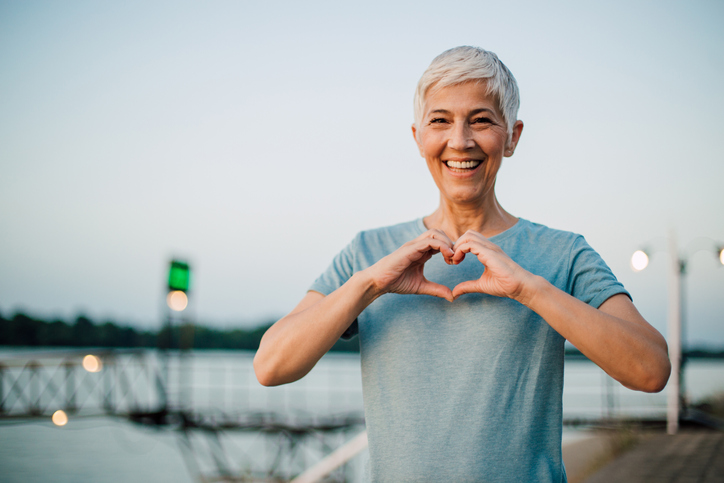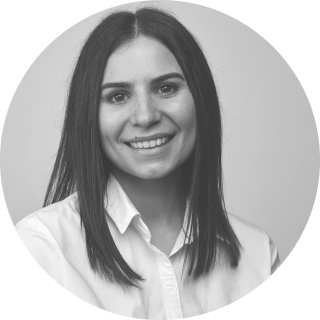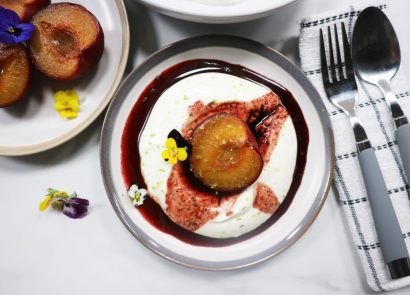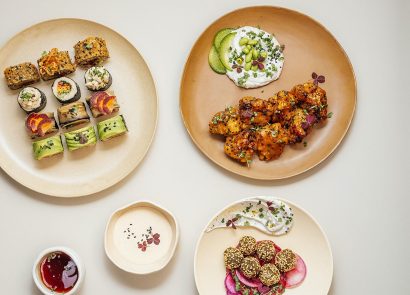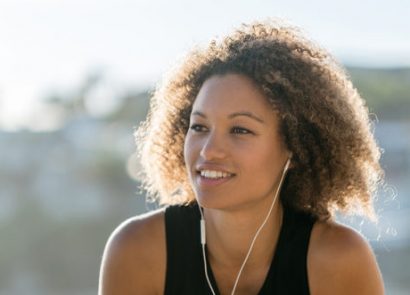Breasts come in all shapes and sizes, but it’s difficult to know what’s normal when it comes to breast health.
This guide will look at the steps of breast care, when to worry about breast pain and how to take care of yours for life.
Breast health: Your Guide To The Symptoms Of Breast Cancer, When To See A Doctor And Breast Cancer Follow Up Care
For many women, breasts are only seen as lumps of fat that sit on our chest, but they might need more maintenance than you think.
In this handy guide, we’ve borrowed the brains of the experts in breast care to help you decipher what yours should look like, and how to keep yours in check.
Why It’s Important To Take Care of Our Breasts
If you’ve ever felt something ‘not quite right’ about your breasts, you won’t be the first and probably the last person to jump on and google “breast cancer symptoms” but this guide is here to put your mind at ease, with breast health tips, the meaning behind breast pain causes and helpful steps of breast care.
Symptoms Of Breast Cancer
First and foremost, sore breasts and itchy breasts are normally NBD and completely normal, it’s the pain in left breast and sharp pain in breasts that may need attention from a professional.
When To Worry About Breast Pain
- The signs and symptoms of breast cancer include:
- Changes in skin texture, e.g. puckering or dimpling
- Lumps and thickening
- Nipple discharge
- Nipple inversion and changes in direction
- Swelling in your armpit or around your collarbone
- Constant, unusual pain in your breast or armpit
- A sudden, unusual change in size or shape
- A rash or crusting of the nipple or surrounding area
Breast Health Tips
Breast cancer is the most common type of cancer in the UK, and although there’s no golden nugget to ensure you don’t get the disease in your lifetime, there are some ways to prevent the health risks of breast cancer.
We want to spread as much breast cancer awareness as possible, so women everywhere can know the risks and be prepared if you come across a breast cyst or painful lump in the breast.
Consider this your breast cancer care forum – a safe space to understand how to reduce your risk of the sometimes fatal disease.
Get Moving
Need motivation to go to the gym? Research shows that women who work out for at least 10 hours a week have a 30 percent lower risk of breast cancer compared to sedentary folk.
“It’s not all about working up a sweat in the gym or heading out for a long run – aim for at least 30 minutes of exercise per day (or three and a half hours a week),” says Eluned Hughes, head of public health at Breast Cancer Now.
“This needn’t be done in one go – break it up throughout the day. It could be something as simple as walking to work, gardening or taking the family out for a bike ride.
Any activity that makes you warmer, breathe harder and encourages your heart to beat faster counts.”
Think Before You Drink
If you’re thinking about cutting back on alcohol, here’s another good reason to go dry – an increasing amount of research is showing that drinking less alcohol may lower the risk of cancer.
“There isn’t a ‘safe’ alcohol limit when it comes to breast cancer risk,” says Eluned.
“Even one drink a day can increase your risk, so limiting your intake is one of the best ways you can lower your chance of developing the disease.”
Be mindful about the amount you drink. And if possible, opt for a couple of ‘dry’ days every week.
Eat The Rainbow
Aim to get your five a day of fruit and vegetables. Recent research led by researchers from America’s Harvard T.H. Chan School of Public Health discovered that women who ate more than 5.5 portions of fruit and veggies had an 11 percent lower risk of breast cancer, especially of aggressive tumours, than those who didn’t pack in the good stuff.
Cruciferous veg, such as broccoli and yellow and orange vegetables, were particularly significant when it came to lowering breast cancer risk.
Try to get your fill of this healthy fodder by packing at least three-quarters of your plate with wholegrains, vegetables, fruit and pulses.
Screening For Breast Cancer
Women aged between 50 and 70 years are invited for NHS breast screening every three years to help spot breast cancers sooner.
“As you get older, your risk of breast cancer increases,” warns Eluned. “Evidence shows that routine breast screening can prevent women dying from breast cancer, and we therefore encourage all women to attend where possible.”
There are risks to breast screening – for example, there’s a chance that a non-invasive breast cancer known as DCIS may be detected and you may receive treatment for a condition that wouldn’t have grown – but the potential benefits outweigh the risks.
“Mammograms can help spot cancers earlier, but they can’t stop cancers developing,” adds Eluned.
“It’s still important to check your breasts regularly, whether you go for breast screening or not.” Download the free Breast Check Now app to keep a record of your checks, and report anything unusual to a doctor.
Go Plastic-Free
Aside from being good for the environment, here’s another reason to scrap plastic – a study in the Journal of Steroid Biochemistry and Molecular Biology has linked exposure to bisphenol A (BPA), a chemical used to make hard plastics, to an increased risk of breast cancer.
According to experts, BPA simulates the effects of the hormone oestrogen, which can then fuel some types of breast cancer.
The evidence isn’t conclusive but it’s wise to minimise your plastic usage for this and a horde of eco-friendly reasons.
Scrap The Sugar
Downsizing on foods that aren’t healthy, such as sugar and processed meals, and having more of the good stuff, such as plant-based dinners, could help prevent several diseases, including diabetes, heart disease and some forms of cancer.
“Most cases of breast cancer occur in women who have been through the menopause,” explains Eluned.
“By maintaining a healthy weight throughout your life, you can reduce your risk of developing breast cancer after the menopause.
The more weight you gain throughout your life, the higher your risk of developing breast cancer will be after the menopause.”
Further research shows that meat or fish cooked at high temperatures, as is the case when grilled, pan-fried or barbecued, may produce heterocyclic amines (HCAs), which are carcinogens that can damage human DNA. Try to limit your intake of these foods where possible.
Breast Is Best (Where Possible)
“Around 40 percent of all cancer cases are preventable,” says Deborah Hyde, press manager at World Cancer Research Fund (WCRF).
“After not smoking, and eating a healthy diet, being more active each day and maintaining a healthy weight are the most important ways you can reduce your cancer risk.”
However, if you’re a new mum, and are able to, the WCRF also outlines the many benefits of breastfeeding.
Breastfeeding lowers the levels of some cancer-related hormones in the body and gets rid of any cells in the breasts that may have DNA damage. Plus, it’s good for the baby.
How To Check Your Breasts
Checking your breasts can save your life, as an early diagnosis is essential to beating breast cancer.
You can check in any way that feels comfortable for you – in the shower, when you’re in bed or in the mirror. However you want to check, the experts at breast cancer charity CoppaFeel! have some handy pointers to help.
Examine Regularly
“We believe boob checking should be a monthly habit, so that you’ll notice any unusual changes quickly.
By checking on a regular basis, you’ll also learn what’s normal for you each month and understand the acupressure points for breast health.
Everyone has to start somewhere, so don’t worry if you’re not feeling confident straight away.”
Know What’s Normal For You
“Being breast-aware simply means knowing what is normal for your boobs or pecs. If you have periods, it’s likely you’ll find that your breasts will naturally change as part of your cycle each month.
It is important to get to know the normal rhythm of your boobs so you will be able to detect anything unusual quickly.”
If you’ve recently had alterations to your breasts by a plastic surgeon, such as a breast lift or breast implants, you might not be as familiar with yours post-surgery, so spend some time getting to know them and your new shape.
Look And Feel
“Many of the signs and symptoms of breast cancer are changes you would only notice by looking and feeling your boobs.”
Remember Your Collarbones
“Breast tissue isn’t only found in your boobs. It reaches all the way up to your collarbone and underneath your armpit, so check this whole area each time.
This is the same for both men and women.”
If In Doubt, Get It Checked Out
“Breast cancer doesn’t just show up as a lump so getting to know all the symptoms will help you detect anything suspect, quickly.
Remember that some of these changes might occur naturally with your cycle and can be perfectly normal.”
This is especially important if you’re using a breast pump while pregnant.
How Breast Cancer Affected Me
We hear from some women who have real-life stories and had their world turned upside down by breast cancer.
Kristin Hallenga, founder of Coppafeel @howtoglitteraturd
“I got diagnosed at 23 and for me, it was very much about, ‘right, how do I manage this?’.
The harsh treatments meant my weight really fluctuated and then my left breast was removed.
Losing my hair was all part of getting better, so it worked for me to see those changes as part of the process of fighting the disease.
At CoppaFeel, we want people to start checking themselves when they’re younger, so our new campaign, Grab Life By The Boob, encompasses our attitude to the disease and to life.
It can affect anyone and we wanted to spread awareness of that.”
Helen Addis, founder of #changeandcheck @thetittygritty
“I liken that initial diagnosis to when you first have children.
You’re so used to having your own life, then everything changes.
I found telling my family hard. They found it emotional. Every time I had to tell a loved one about my breast cancer, I’d relive it.
But we were able to focus and get into fight mode. The ITV Lorraine ChangeAndCheck campaign is now in John Lewis, Oasis, Ted Baker, Monsoon, Asda and many independent places.
Changing rooms are the perfect time to check! So far, I’ve had six women contact me to say they’ve had a cancer diagnosis from it.”
Louise Pentland, vlogger and author @louisepentland
“My darling mum died when I was seven, after a brave two-year battle with breast cancer.
Her death taught us all to cherish every moment, even the dull and mundane because you never know how many moments you have left.
Now I’m a mum, I tell my daughters regularly how much I love them and how special they are.
I constantly want to fill them with everything I would ever want to say to them, just in case I don’t get to say anymore.
Losing my mum has made our family love harder and louder and we’re grateful to her for that.”
Want to know how to look after your ticker? Our experts have eight ways to take care of your heart.









